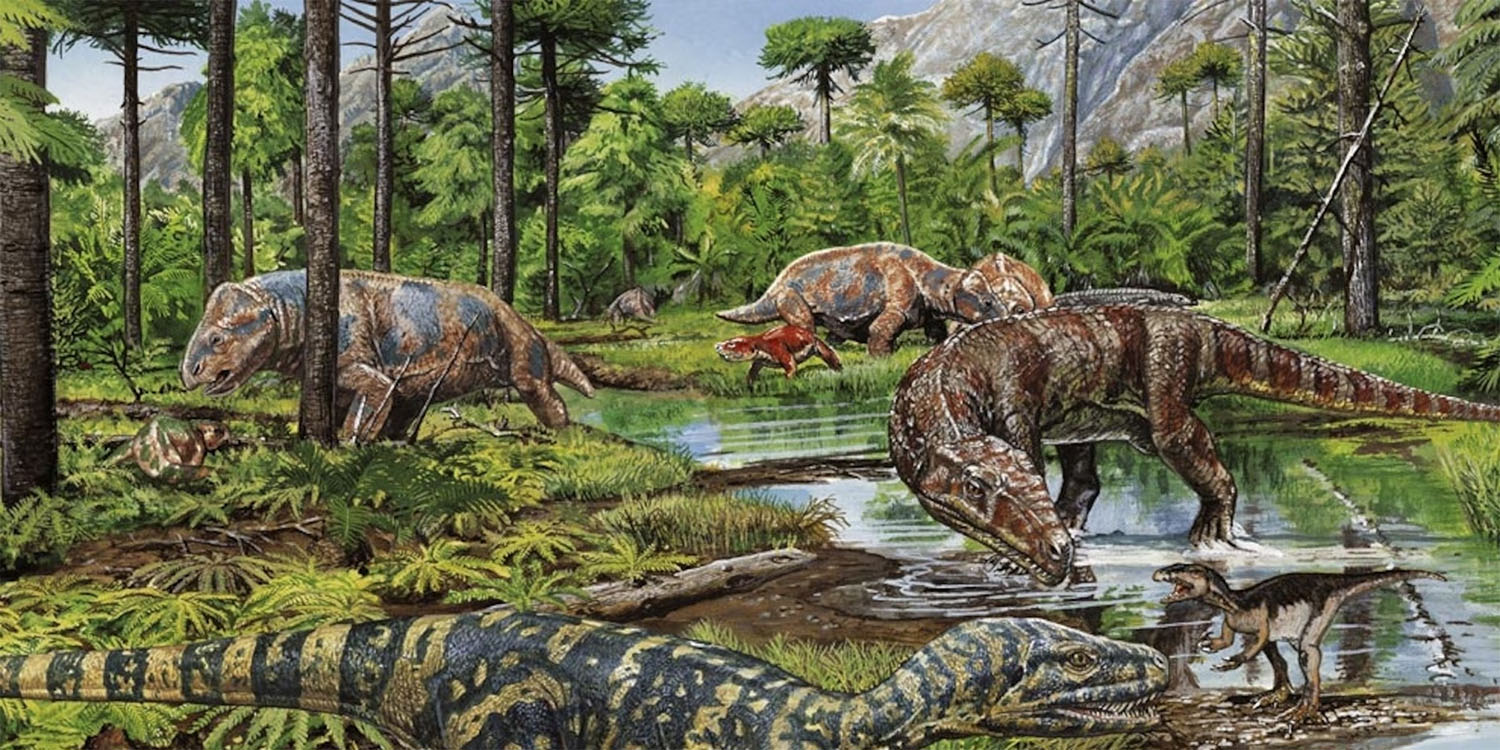
25 interesting facts about Triassic Period
- 👁️ 281
The Triassic Period, spanning from approximately 252 to 201 million years ago, marks a pivotal time in Earth’s history characterized by dramatic geological and biological changes. Following the Permian mass extinction, the Triassic witnessed the slow recovery of ecosystems and the emergence of precursor species to many modern animals. This period laid the foundation for the dominance of dinosaurs in the subsequent Jurassic Period. It was also a time of significant continental movement, where the supercontinent Pangaea began to rift apart, setting the stage for the modern distribution of continents. The Triassic Period is a fascinating era that offers insight into the resilience and adaptability of life.
- The Triassic Period is the first period of the Mesozoic Era, often referred to as the Age of Reptiles.
- This period lasted about 51 million years, starting after the Permian mass extinction, one of the most severe biodiversity crises in Earth’s history.
- During the Triassic, all the Earth’s landmasses were joined together in a supercontinent called Pangaea.
- The climate throughout the Triassic was generally hot and dry, which significantly influenced the development and distribution of plant and animal life.
- The end of the Triassic was marked by another mass extinction event, which affected marine communities and paved the way for dinosaur diversification in the Jurassic.
- Early dinosaurs, as well as the ancestors of modern mammals and birds, first appeared during the Triassic.
- The dominant terrestrial vertebrates were the archosaurs, which included not only dinosaurs but also ancestors of crocodiles.
- Plant life during the early Triassic was sparse, especially in the interiors of Pangaea due to the harsh climatic conditions.
- Recovery from the Permian-Triassic extinction event was slow, taking nearly 10 million years for ecosystems to stabilize.
- The first true mammals, evolving from cynodont therapsids, emerged in the late Triassic.
- The Triassic seas were populated by large marine reptiles like ichthyosaurs and nothosaurs.
- Insect diversity flourished during the Triassic, with the first appearance of many modern groups of insects.
- The supercontinent Pangaea began to break apart during the late Triassic, leading to the formation of the Atlantic Ocean.
- Volcanic activity towards the end of the Triassic contributed to the mass extinction by releasing vast amounts of volcanic gases.
- Many of the early dinosaurs were small bipeds; the gigantic sauropods and fierce theropods would not evolve until the Jurassic.
- Conifers, cycads, and ginkgoes were the dominant plant groups, shaping the landscape and providing resources for herbivorous reptiles.
- Amphibians were still significant, but their diversity declined towards the end of the period due to drier conditions.
- The first turtles also appeared during the Triassic, evolving from earlier reptilian ancestors.
- Coelophysis, one of the earliest known dinosaurs, lived during the late Triassic and provides valuable insights into the early evolution of dinosaurs.
- Triassic rock layers are often red in color due to the oxidation of iron under dry conditions, leading to the term “red beds”.
- Pangaea’s vast desert interiors made it difficult for animals and plants to survive far from coasts, influencing evolutionary pressures.
- The end-Triassic extinction is thought to be triggered by both volcanic activity and an asteroid impact, though evidence for the latter is less definitive.
- Fossil evidence from the Triassic is crucial for understanding the pre-dinosaur world and the origins of many modern animal lineages.
- The separation of the continents during the Triassic led to increased speciation as populations became isolated.
- By the end of the Triassic, the first pterosaurs, or flying reptiles, had taken to the skies.
In conclusion, the Triassic Period was a critical chapter in the history of life on Earth, marked by recovery, adaptation, and innovation following a catastrophic extinction. The emergence of new life forms during this period set the stage for the later dominance of dinosaurs and eventually the rise of mammals. The geological and climatic shifts of the Triassic Period had profound effects on the evolution of ecosystems, which can be seen in the diversity of life forms that emerged. Understanding the Triassic Period helps us appreciate the complex interplay between geological forces and biological evolution.
The Triassic Period, spanning from approximately 252 to 201 million years ago, marks a pivotal time in Earth’s history characterized by dramatic geological and biological changes. Following the Permian mass extinction, the Triassic witnessed the slow recovery of ecosystems and the emergence of precursor species to many modern animals. This…